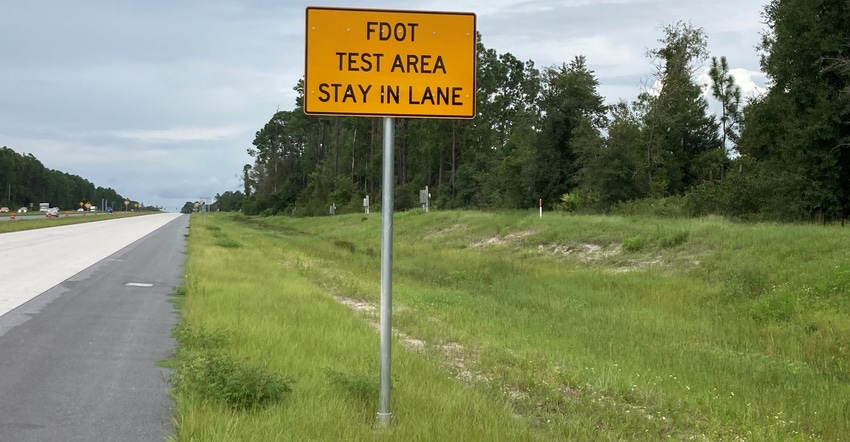U.S. Highway Converted Into Concrete Field Laboratory
Officials in one state are turning a 4-mile swath of highway into a live testing site as part of an initiative to optimize concrete pavement designs.

Live traffic loads will be used to test different concrete surface textures and pavement thicknesses as part of a new initiative by Florida transportation officials to find cost-effective and long-lasting concrete pavements.
The concrete “test road” will be the first of its kind in the Southeast and will turn a segment of U.S. Highway 301 into a giant field laboratory, according to a release from the Florida Department of Transportation.
“The information we collect will help us optimize concrete pavement designs for safety, longevity and cost-effectiveness, ultimately delivering a better roadway experience to residents and visitors to our state,” Howie Moseley, a materials engineer for Florida DOT, said in a statement.
Moseley said the state’s standard base type for concrete pavements is 4 inches of asphalt over a stabilized subgrade. During the study, officials will look at a thinner 2-inch asphalt base, he said in a video describing the project.
Officials will study the performance of a composite base, consisting of 2 inches and 4 inches of lime rock in respective tests, and a lime-rock-only base, Moseley said.
“We’ve got embedded instrumentation that includes strain gauges, thermocouples and moisture gauges that’ll be monitored continuously,” he said. “We’re also going to divert traffic off of the concrete test road twice a year.” While traffic is diverted, Mosley said engineers will use equipment to measure cracks and conduct stiffness, texture and friction studies.
In addition, structural, drainage and calibration experiments will be conducted on the road, according to Florida DOT’s website. The structural experiments will involve 20 test road sections to investigate thickness and base type, while the drainage experiments involve 16 road sections built with and without edge drains.
“The calibration experiment…will be used to more accurately calibrate the fatigue cracking,” the website said. “Concrete pavement joints will be sawed at two different lengths and curing application rates will be modified to ensure crack initiation at different ages.”
The test road, expected to be in use for more than 10 years, according to a Florida DOT document, has been in the works for years and will be located in Clay County. The road, which has a $17 million price tag, according to the department, will run alongside the northbound lanes of U.S. Highway 301.
Traffic began to be diverted onto the test road in March, passing through a weigh-in motion system that will document vehicle types and weights that traverse the road, the department’s website said.
About the Author(s)
You May Also Like




